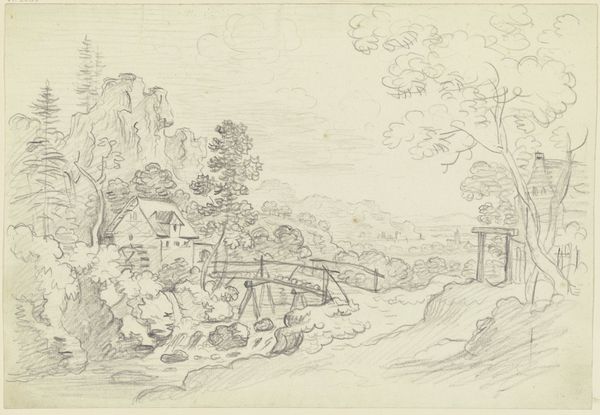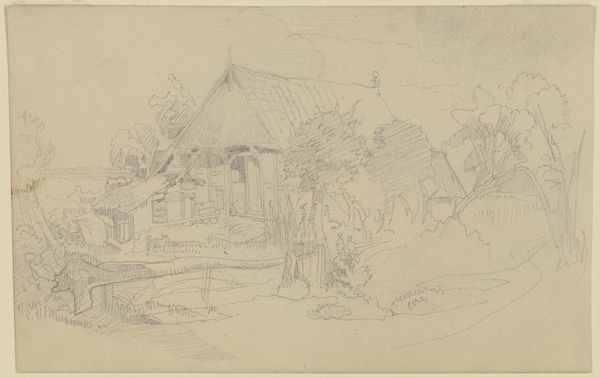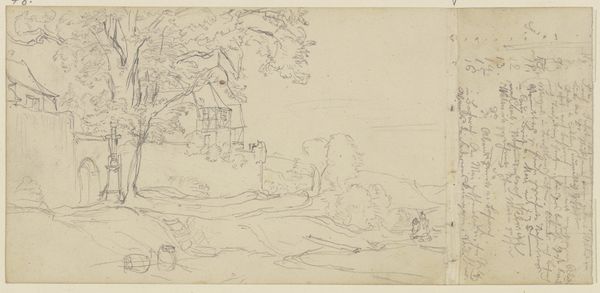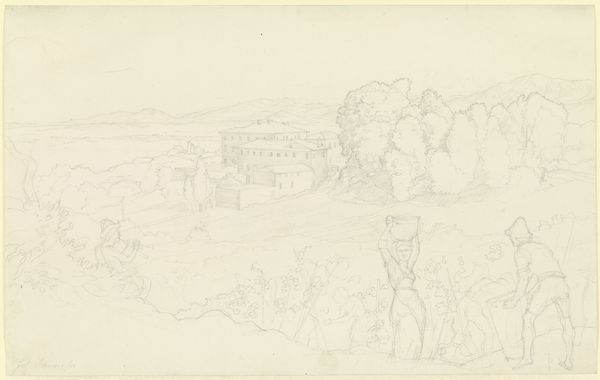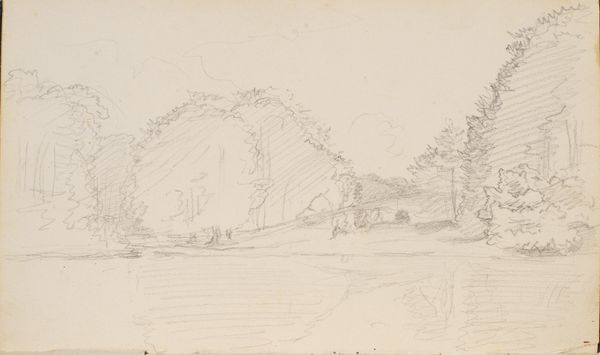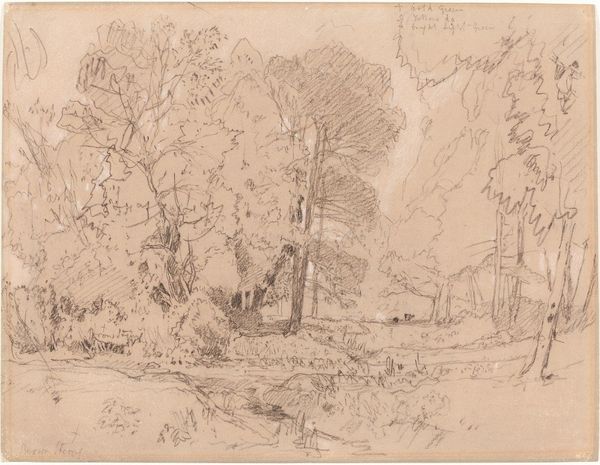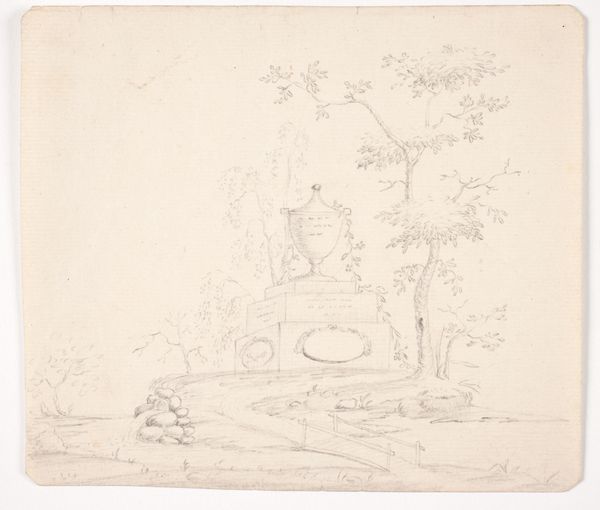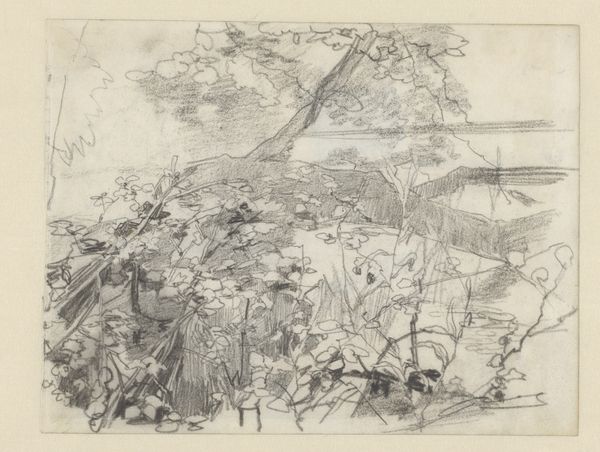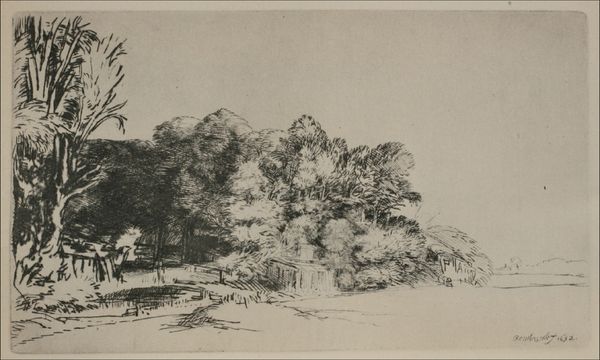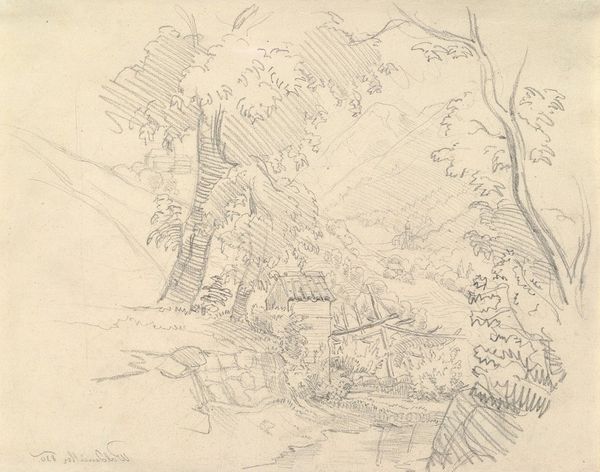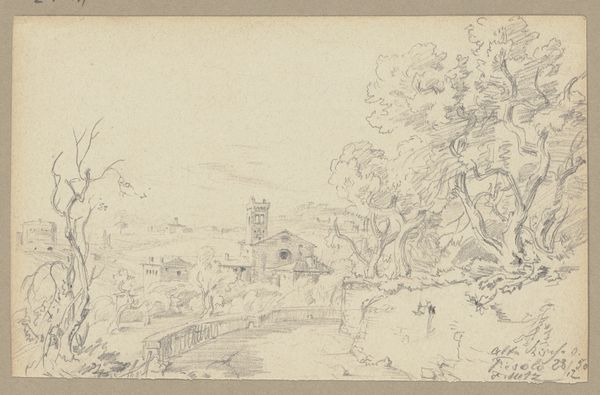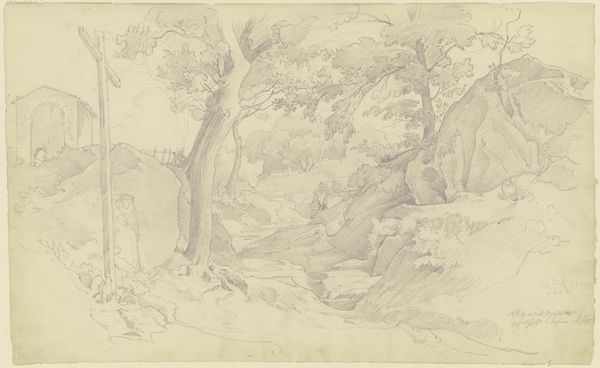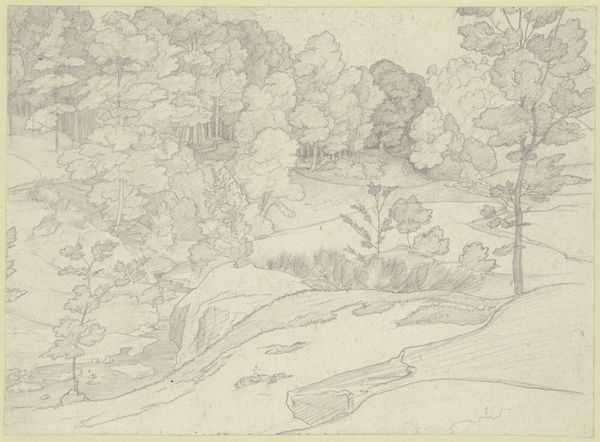
drawing, paper, pencil, graphite
#
drawing
#
landscape
#
paper
#
ink drawing experimentation
#
pencil
#
graphite
Dimensions: 285 × 429 mm
Copyright: Public Domain
Curator: Welcome. Before us is "Bampton Grange," an undated drawing held in the collection of the Art Institute of Chicago. The medium appears to be primarily graphite and pencil on paper, perhaps with touches of ink to define certain lines. Editor: It feels ephemeral, doesn't it? Like a memory fading at the edges. The light washes across the buildings, almost obscuring them. It's strangely melancholic. Curator: Indeed. The artist uses line economically. Note the layered, almost skeletal structure—the underlying geometry first sketched out, then subtly built upon to define the architectural forms and landscape elements. There’s a sense of deliberate reduction here. Editor: I'm drawn to the textural details suggested with so few marks. The rough stone walls of the grange, for instance. One can imagine the hands that shaped them, the generations that lived within. But also the sheer labor-- how materials shaped both buildings and lives back then. Curator: A compelling point. Observe how the composition adheres to certain classical principles despite its seeming informality. The placement of the main structure creates a focal point, with the receding planes of the road and the suggestion of trees guiding the viewer’s eye through the pictorial space. Editor: And look at those rooflines, cascading one after another, a visual rhythm echoed by the stone work leading towards us. But how does that influence meaning, if at all? Were these simple tenants, a landed family...what defined that labor? Curator: We can only speculate without more contextual data. But certainly the deliberate composition—its blend of precision and suggestive incompleteness— invites us to contemplate not only the scene itself, but also the act of representation. Editor: Precisely. For me, this speaks to the essential role played by materiality. How it determined not just survival, but status too. We're all marked by the materials we come from, that make up our lives, in any case. Curator: So we both bring very separate viewpoints, but appreciate how much is conveyed through the considered execution of materials and skillful formal strategies, even in such a simple work as this. Editor: Yes, definitely more than first meets the eye. A quiet invitation to reflect, as with so much landscape art from that time.
Comments
No comments
Be the first to comment and join the conversation on the ultimate creative platform.
